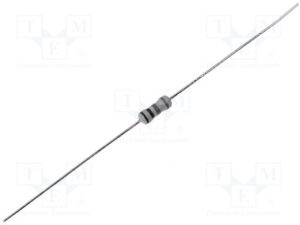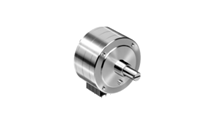The resistor is a passive electrotechnical component, which has ideally the only property – electrical resistance. It is used to reduce the amount of electrical current or to obtain a certain voltage drop. Fixed resistors have a fixed resistance value that changes only slightly depending on the temperature passing through the current and life of the resistor. Adjustable resistors are used for continuous control (eg volume adjustment) or as temperature sensors (thermistors), voltage (varistors), lights (photoresistors).
Resistors
are an ubiquitous component in electronics. It is manufactured using many different manufacturing processes and has many parasitic features such as inductance, capacity, etc., which can sometimes be skillfully used.
Most common resistors are unfortunately magnetic, making them problematic to use in high-end audio devices. Non-magnetic resistors should be used on feedback loops, all resistors with direct signal propagation, in volume controllers when they are dealt with as controllers.
Types of resistors
Fixed – the manufacturer has a fixed resistance value
Variable – designed as a rigidly adjustable or adjustable tool or control.
- Single turn
- Multi-turn
- Linear slider
Resistors according to resistance material
Wire resistors


are made of insulated wire which is wound on a ceramic body and overlaid with varnish, cement, or glass-coated. Their parasitic inertia is an inductance that can be skillfully used in some connections.
Layer resistors
Carbon resistors

The oldest type consists of a layer of crystalline carbon deposited on a ceramic body. High noise, poor long-term stability, low operating temperature. They have a negative temperature coefficient to compensate for metalfilm-type resistors with a positive temperature coefficient in parallel. Resistance to short-term overload.
Carbon resistors are still used and popular with the construction of tube amplifiers, especially professional musicians for guitar amplifiers, and so on.
Metallized resistors
The layer is formed by vacuum metal deposition. Much better parameters than carbon.
Metal oxide resistors
The layer is made of metal oxide. Higher stability, heat resistance and impulse load than metallized.
Cermet resistors
A cermet is a composite material composed of ceramic (cer) and metal (met) materials. A cermet is ideally designed to have the optimal properties of both a ceramic, such as high temperature resistance and hardness, and those of a metal, such as the ability to undergo plastic deformation. The metal is used as a binder for an oxide, boride, or carbide. Generally, the metallic elements used are nickel, molybdenum, and cobalt. Depending on the physical structure of the material, cermets can also be metal matrix composites, but cermets are usually less than 20% metal by volume.
Variable resistors

In audio technology, they are mainly used to adjust the volume. Precision designs are offered by ALPS, BOURNS, VISATON. The most precise are then switchable resistor networks.
Characteristic properties of resistors
- Rated resistor resistance – expected resistance of the device in ohms.
- Resistor rated resistor tolerance – The tolerance for nominal resistor resistance is indicated.
- Nominal Resistor Load – Performance that can be converted to heat under certain specified conditions without its surface temperature exceeding the permissible size.
- Operating Resistor Load – The maximum permissible operating load of the resistor that is determined by the highest component temperature, which does not permanently change its resistance or significantly shorten its lifetime.
- Largest Allowable Voltage – Largest Allow Voltage Between Components Outputs, Exceeding Damage.
Resistor Resistance Resistance Temperature – Determines the resistance change of the resistor caused by changing its temperature. It indicates the largest proportional variation of component resistance corresponding to an increase of 1 ° C in the temperature range in which the resistance change is returnable. - Noise Voltage – Occurs due to uneven motion of electrons within the material of the component. It is manifested by small, time-irregular changes in potential. The cause of noise is a noise tension that has two main components:
- The thermal noise voltage – is dependent on the temperature and the width of the frequency band in which
- The resistor is used. It creates so-called Johnson’s noise.
- Surface Noise Voltage – Depends on the DC voltage rating U attached to the resistor.